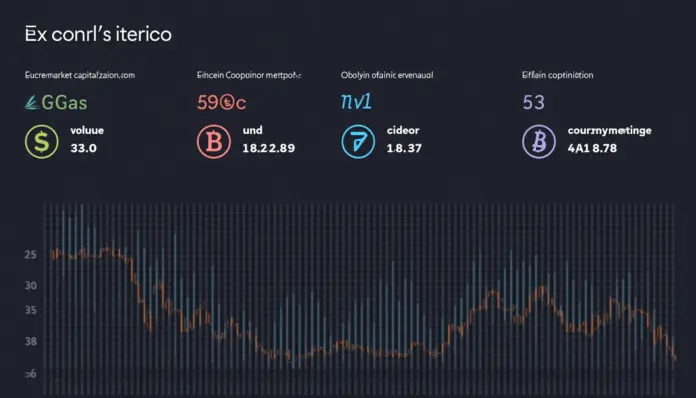Introduction
Did you know that over 5.6 million Bitcoin wallets hold an average of 0.1 BTC each? Despite the immense interest in Bitcoin trading, only 30% of investors actively track important metrics that could shape their investment outcomes. Understanding key Bitcoin metrics is crucial for any serious investor aiming to navigate the digital currency landscape effectively.
1. Understanding Market Capitalization
Market capitalization is the total value of Bitcoin in circulation, calculated by multiplying the current price by the total supply. For example:
- If Bitcoin is priced at $30,000 and there are 19 million BTC in circulation, the market cap is $570 billion.
A higher market cap typically indicates stability, making it an essential metric to consider. New investors may compare Bitcoin’s market cap to that of altcoins to gauge potential investment opportunities.

2. Tracking Trading Volume
Trading volume reflects how many Bitcoins have changed hands over a specific period. It’s a vital indicator of market activity:
- Increased trading volume often results in price volatility.
- For instance, a spike in volume could suggest strong market interest, leading to potential price increases.
Tip: Assess trading volume during different market conditions to better anticipate price trends.
3. Monitoring Bitcoin Dominance
Bitcoin dominance measures Bitcoin’s market capitalization relative to the total crypto market. Currently, Bitcoin holds around 45% of the total market. A rising dominance level can signal positive sentiment towards Bitcoin over altcoins, guiding investment strategies.
- Sudden drops in dominance may indicate a shift towards altcoins.
Understanding Bitcoin dominance can help investors assess the relative strength of Bitcoin in the market.
4. On-Chain Metrics: Network Activity and Fees
On-chain metrics like active addresses and transaction fees provide insights into user engagement and network health:
- An increase in active addresses usually indicates heightened interest in Bitcoin.
- Transaction fees can signal network congestion, impacting transaction times.
For example, if fees spike, it may suggest that demand for transactions is much greater than the network can currently handle. This information can help investors decide when to enter or exit trades.
Conclusion
Tracking these Bitcoin metrics is not only essential for safeguarding your investments but also for maximizing potential returns. Remember, investing in cryptocurrency holds risks, and it’s vital to stay informed. Stay ahead of the curve by monitoring these metrics regularly, and consider leveraging tools like portfolio trackers for enhanced insights.
Download our comprehensive guide to secure wallet storage and ensure your assets are protected.
Disclaimer: This article is for informational purposes only and does not constitute financial advice. Please consult with your local regulatory authority before making investment choices.




